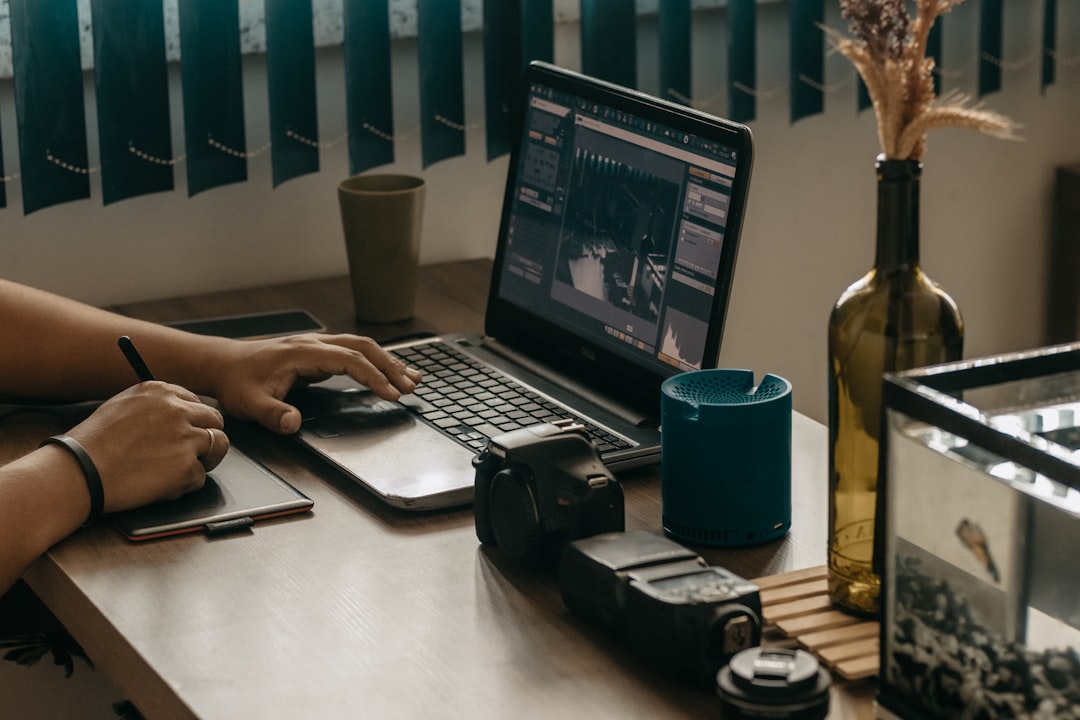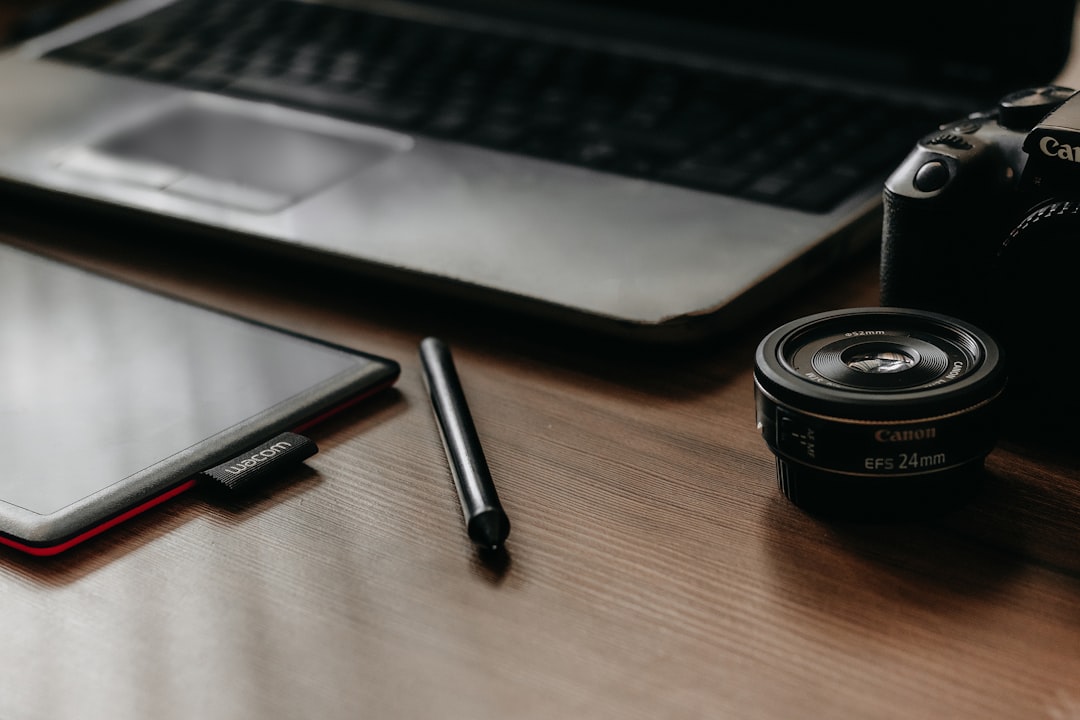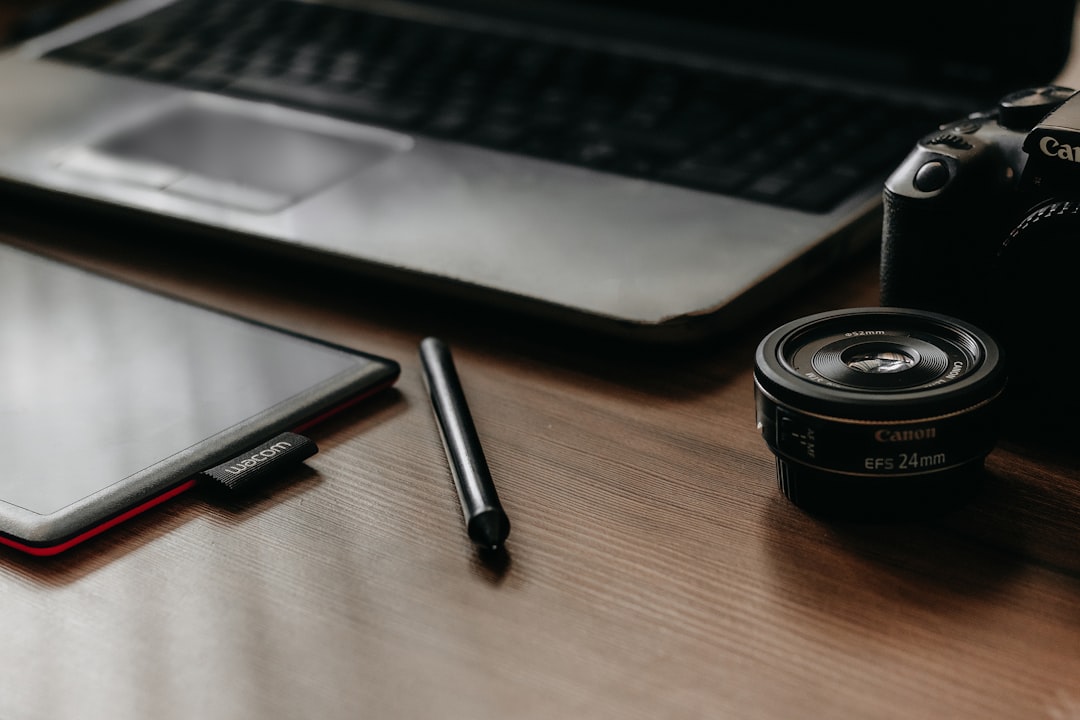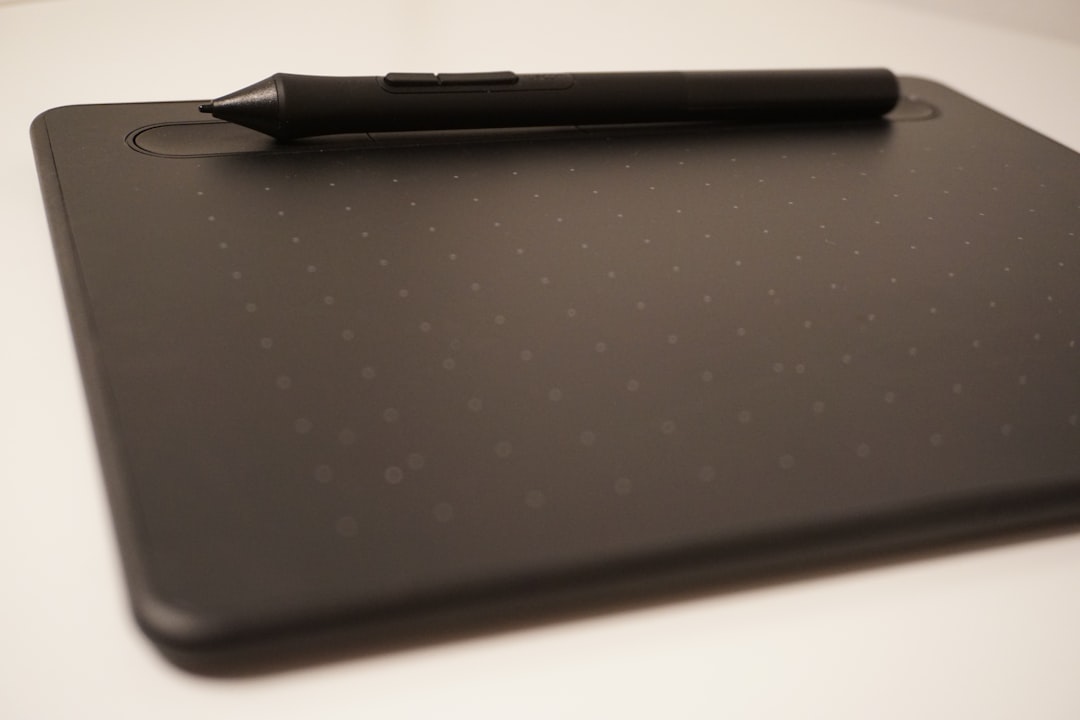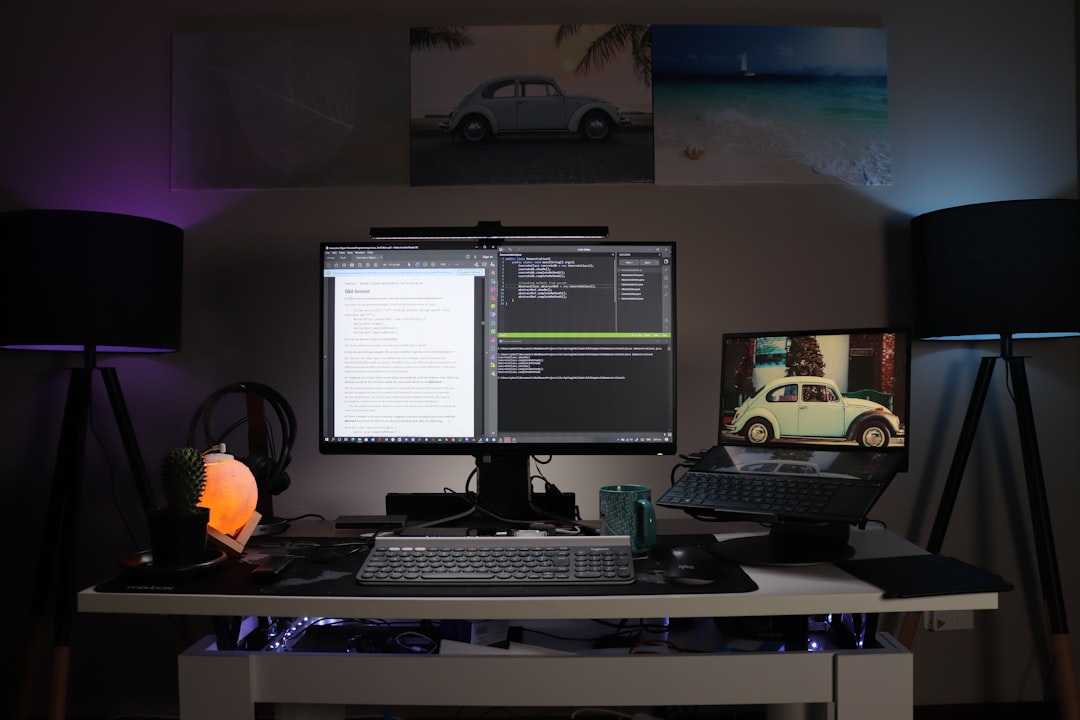Optimizing Wacom Intuos Express Menus for E-commerce Product Photography Workflows
Optimizing Wacom Intuos Express Menus for E-commerce Product Photography Workflows - Customizing ExpressKeys for Quick Access to Photo Editing Tools
You can really supercharge your photo editing process by customizing the ExpressKeys on your Wacom Intuos tablet. Imagine having your favorite tools and commands, like the brush tool or selection tools, right at your fingertips. You can do this by using the Wacom Desktop Center which makes it easy to map these actions to the ExpressKeys. This way, you can make quick adjustments to your photos, which is particularly helpful when you're working with product staging and image management. It's all about efficiency. If you're using Adobe Photoshop or Lightroom, you can also use the ExpressKeys for editing shortcuts, which can save you a ton of time. It's almost like a secret weapon for e-commerce photographers. The key is to make the most of this level of customization to truly optimize your digital workflow, especially when working in the fast-paced world of e-commerce.
Let's get real, folks. You want to spend less time wrestling with software and more time creating killer product photos, right? That's where these Wacom ExpressKeys really come in. Think of them as your own personal keyboard shortcuts on steroids.
Why mess around with navigating menus when you can just tap a button for your go-to tools, like cropping, color correction, or resizing? It's like magic for your workflow. Not only does this save you time, it also lets you stay focused on the creative part of the job. No more mental gymnastics to remember which key combo does what.
Plus, those long editing sessions can really take a toll on your hands. Having those frequently used tools right at your fingertips can really cut down on muscle fatigue and strain.
But wait, there's more! With those programmable pressure sensitivity levels, you can get some serious precision in your edits. Imagine the detail you can achieve on those product images, especially when you're working with fine textures or details.
It's all about maximizing efficiency, folks. You can even customize those ExpressKeys to switch between different tools and layers, making it super intuitive to manipulate the product staging elements. It's like having a personal assistant at your fingertips, but way cheaper.
Just remember, this is about finding what works best for *your* workflow. Don't be afraid to experiment and keep those ExpressKeys tweaked until they're a perfect fit for your creative needs.
Optimizing Wacom Intuos Express Menus for E-commerce Product Photography Workflows - Configuring Pen Button Shortcuts for Seamless Product Image Navigation
Configuring pen button shortcuts on your Wacom Intuos tablet is a game-changer for e-commerce product photography. It's all about maximizing efficiency. Imagine zooming in on a product detail with a simple click instead of hunting for the zoom tool on your keyboard. Or, switching between your selection tool and your brush with a tap of a button. It's like having your most frequently used tools at your fingertips. These customized shortcuts make editing product images feel incredibly natural, allowing you to concentrate on the creative aspects of your work, instead of wrestling with your software. Plus, they can significantly reduce hand fatigue during long editing sessions, especially when working with fine details or textures. The key is to experiment and personalize the shortcuts to create a workflow that feels perfect for you.
Let's delve into the fascinating world of Wacom Intuos tablets, specifically focusing on how pen buttons can be configured to create a streamlined workflow for e-commerce product photography. While we've already explored the power of ExpressKeys in optimizing editing tasks, there's a deeper layer of customization to explore - pen button shortcuts.
Picture this: you're in the throes of editing a product image, constantly switching between tools, zooming in and out, and navigating through different views. This repetitive process can lead to fatigue, and it definitely slows down the creative flow. Now, imagine having direct access to these commands right at your fingertips, instantly and intuitively.
This is where the pen buttons come in. You can program these buttons to perform specific functions within your image editing software, making navigation smoother and faster. Think of it as building a personal shortcut menu, tailored to your specific needs.
The beauty lies in the potential to significantly improve your workflow efficiency. It's not just about saving a few seconds here and there. The ability to quickly navigate between images and zoom in on details can significantly reduce the cognitive load and help you focus on the creative aspects of your work. Studies show that minimizing the time spent on repetitive tasks actually leads to a boost in creativity and problem-solving, allowing you to explore new ideas and experiment more freely.
There's also an interesting relationship between pen button customization and physical comfort. While using a tablet can be ergonomically sound, repetitive motions like switching between tools can lead to repetitive strain injuries over time. Configuring your pen buttons to optimize your workflow could potentially contribute to a more ergonomic and healthy experience.
The impact on image quality is not to be overlooked. With a more efficient workflow, you can invest more time in perfecting your product images, incorporating more detail, and exploring unique angles. It's not just about speed; it's about precision and control. This, in turn, can lead to higher customer satisfaction and conversion rates in your e-commerce store.
The integration of pen button shortcuts with AI-powered image generation tools also presents exciting possibilities. Imagine being able to instantly preview how a filter would look, or even have AI adjust image elements on the fly based on your input. These advancements promise to revolutionize the process of creating and editing product images, further streamlining the workflow and allowing for more creative experimentation.
Remember, it's all about finding the right balance and tailoring your setup to suit your individual style and needs. Experiment, explore, and discover the true potential of those pen buttons. You might be surprised at how much more efficient and creative your product photography workflow can become.
Optimizing Wacom Intuos Express Menus for E-commerce Product Photography Workflows - Optimizing Touch Ring Settings for Efficient Zoom and Brush Size Adjustments
The Wacom Intuos tablet's Touch Ring can be a real game-changer for your e-commerce product photography workflow. You can configure it to make quick adjustments to your zoom and brush size without taking your hands off the pen. Imagine easily toggling between brush sizing and rotating your image. It's a lot faster than reaching for your keyboard or mouse. This is especially helpful when you're dealing with the details of product images, where every pixel counts. You can even customize the zoom speed, which can really speed up your workflow. Plus, you can use it to scroll through layers, making it easy to navigate complex images. While the Wacom Intuos Express menus offer a wealth of customization options, it's the Touch Ring that really helps you make the most of those "in-between" moments when you need to make precise and quick adjustments to your photos. This means less time fiddling with software and more time putting the finishing touches on those killer product shots.
The Wacom Intuos Touch Ring is more than a mere gadget; it's a potential game-changer for e-commerce photography workflows. It's not just about a fancy feature - it's about how that feature can be customized to make photo editing more efficient. For example, configuring the Touch Ring for zoom adjustments eliminates the need for clunky keyboard shortcuts, enabling faster and more precise zooming with a simple two-finger gesture. This means more time spent on the creative aspects of image editing and less on wrestling with the software.
However, the potential of the Touch Ring goes beyond just zoom functions. It can be programmed to handle brush size adjustments, layer navigation, even AI-powered image manipulation. This creates a streamlined, almost intuitive experience where you can switch between these actions effortlessly.
But there's a deeper impact here. Beyond just speed and convenience, this level of control can actually boost your creative output. Imagine working with a product image, zooming in on a specific detail, and then immediately adjusting the brush size to meticulously clean up the edges. You're not constantly jumping back and forth between tools, you're fluidly moving between them, creating a continuous creative flow. This uninterrupted workflow can help to maintain focus and, in turn, may contribute to higher-quality images.
Let's also talk about ergonomics. Those of us who spend hours staring at a screen and meticulously editing images know the strain it can take on our hands. By utilizing the Touch Ring for these common editing tasks, we can potentially reduce the amount of hand and wrist movements required, leading to more comfortable sessions.
The Touch Ring isn't just a cool feature; it's a tool that, when customized correctly, can lead to a more efficient, ergonomic, and potentially more creative image editing experience. The challenge now is to understand how to best harness this power to benefit our workflow. There's a real potential for optimization here, and it's an exciting area for exploration in the ever-evolving world of e-commerce product photography.
Optimizing Wacom Intuos Express Menus for E-commerce Product Photography Workflows - Setting Up Custom Radial Menus for E-commerce Specific Functions
Setting up custom radial menus on your Wacom Intuos tablet is like giving yourself a shortcut menu specifically for e-commerce product photography. Imagine being able to zoom in on a product detail or switch between selection tools with a quick flick of your pen. It's a way to make the often repetitive process of navigating editing software faster and more intuitive. You can use the Wacom Tablet Properties and the Wacom Center to assign these actions to specific pen buttons. The real power comes from making it your own. By customizing the radial menus to match your workflow, you can work faster and focus more on the creative aspects of your product images. For e-commerce photographers, this means getting those product shots ready for your online store quicker and better than ever.
There's something really interesting about how radial menus can be customized for e-commerce product photography. It's not just about making things look fancy, it's about improving the whole process. Think about the ways we interact with technology, how we use software, and how those choices impact our efficiency and even our creative thinking.
Radial menus, when done right, can be like a super-charged shortcut menu. They allow you to access commonly used tools and functions with just a few clicks. Research has shown that this kind of "cognitive offloading" can really boost your concentration and creativity, especially when you're working with intricate details in product images.
Now, imagine the impact on precision. If you can access the tools you need quickly, without fumbling around, you can make those fine adjustments to colors, shapes, and textures with much more control. This can really elevate the quality of your product images and make a difference in how your products look online.
I'm also drawn to the idea of personalization. Everyone has their own workflow, their own favored tools, and their own style. By customizing a radial menu, you can tailor it to perfectly match your needs and preferences. This means you can be more efficient and less prone to errors. It's also a great way to make the entire editing experience feel more intuitive, leading to greater satisfaction with your work.
Another intriguing aspect is the potential of these menus in a multi-software environment. We live in a world where e-commerce professionals often need to juggle different image editing platforms. A radial menu that can be adapted across multiple tools could really streamline those transitions, saving time and reducing frustration.
The scalability of these menus is also exciting. Imagine how much time could be saved when editing large batches of images, applying common adjustments with just a few clicks. It's like having a dedicated assistant for those repetitive tasks, freeing up your mental energy for more creative work.
And then there's the future - the potential integration with AI. As AI continues to revolutionize image generation and editing, these custom radial menus could become the central hub for interacting with these powerful tools. This means even faster and more dynamic adjustments, leading to higher-quality and more visually captivating product images.
It's still early days, but I'm convinced that the customization of radial menus for e-commerce product photography could significantly improve efficiency, accuracy, and creative output. It's a fascinating area to explore and one that holds great promise for the future.
Optimizing Wacom Intuos Express Menus for E-commerce Product Photography Workflows - Integrating AI-Powered Image Enhancement Tools into Express Menu Workflows
AI-powered image enhancement tools can revolutionize your Wacom Intuos Express Menu workflow for e-commerce product photography. Imagine automatically sharpening blurry images, fixing color balance, or even removing distracting backgrounds with a simple click. These tools essentially let your tablet do the heavy lifting, so you can focus on the creative aspects of your product shots. This isn't just about speed though. AI can help you achieve a level of detail and precision that might be difficult to achieve manually. The potential is huge. You can now experiment with different lighting effects or create unique product staging with minimal effort. But remember, AI is a tool, not a replacement for your artistic vision. It's up to you to guide the technology and ensure your product images maintain a consistent brand aesthetic.
Integrating AI-powered image enhancement tools into your Wacom Intuos Express Menus might seem like a futuristic concept, but it's actually a powerful way to streamline your e-commerce workflow. Just imagine, having AI tools accessible with a simple press of a button! This isn't about replacing your creative instincts, but about leveraging AI's power to do the tedious tasks, so you can focus on the artistic side of things.
For example, let's think about the tedious process of adjusting brightness and contrast. AI can instantly analyze your image and make these adjustments based on a massive database of reference images, producing results that would have taken you hours to achieve manually. Imagine the time saved! And that's just the tip of the iceberg. AI can intelligently remove backgrounds, saving you from the frustration of manual selection tools. It can even analyze your product images and suggest optimal staging arrangements based on consumer preferences, which can make a huge difference in boosting engagement. This is where AI can truly shine.
Furthermore, AI tools can help you maintain consistency across your product images, ensuring a professional and cohesive brand aesthetic. Imagine having the look and feel of a successful image automatically applied to other images, all with a single click. This is where AI can truly be your partner in brand building.
But here's where things get even more interesting: AI tools can learn from your editing habits over time. It can predict your preferences and suggest changes based on your unique style. You're essentially teaching the AI your vision, creating a personalized editing experience that truly enhances your creative flow.
Of course, AI isn't perfect. There's always the risk of losing that personal touch. So it's crucial to experiment, refine your workflow, and find that balance between the power of AI and your own creative vision. The key is to embrace the possibilities, while retaining your unique artistic expression.
Optimizing Wacom Intuos Express Menus for E-commerce Product Photography Workflows - Fine-tuning Pressure Sensitivity for Precise Product Image Retouching
Using the Wacom Intuos Pro for e-commerce product photography lets you get really precise with your retouching because of its pressure sensitivity feature. It allows you to make incredibly subtle edits, almost like you're drawing with a real brush. This is super important when you're trying to make your products look amazing online, since you need to really capture the texture and detail. You can do so much with just how hard you press on the pen, making it super easy to add those subtle shades and gradations to the images. And let's not forget about the customizable features! You can program buttons and adjust the touch ring to make your workflow even smoother. It's all about working faster, getting those product photos ready for your online store. The whole point is to make the retouching process more intuitive so you can focus on the creative side of things, not fighting with the software. It's amazing what you can do when you really understand how to tweak these settings and make your Wacom tablet work for you. By playing around with the sensitivity and brush settings, you can take a pretty good photo and make it into a killer product image, one that really shows off the product and attracts potential buyers.
The pressure sensitivity features on Wacom Intuos tablets are quite interesting for retouching product images in e-commerce. The tablets typically offer a range of pressure levels, usually between 256 and 8,192, allowing for subtle control over brushstrokes. This detail is vital for achieving that nuanced look in retouching where subtle adjustments can significantly impact the overall result. Studies show that using pressure-sensitive tools can make photo retouching much faster, sometimes up to 30% quicker. The reason for this efficiency boost is that you can seamlessly adjust opacity and brush sizes without constantly changing tools or settings, making the whole process more streamlined. This pressure sensitivity isn't just about speed, it really enhances detail too. For example, you can use pressure to adjust brush hardness and texture, creating more natural-looking shadows and highlights that are essential for showcasing product features realistically.
When it comes to e-commerce, the pressure sensitivity settings can be customized to ensure consistent results, aligning edited product images with a specific brand's aesthetics, which is critical for maintaining customer engagement. Some AI image generation tools now recognize pressure sensitivity as a key parameter, allowing them to mimic natural brushstrokes more effectively. This means AI-generated product images can look even more realistic and visually appealing, almost like they were created using traditional art techniques.
What's really fascinating is the impact on physical comfort. Using pressure sensitivity can help reduce hand strain during long retouching sessions. By employing more natural hand movements, editors can reduce the chance of repetitive strain injuries, making the whole process more comfortable.
It's pretty amazing how these tablets allow you to dynamically adjust the pressure sensitivity settings while editing. This fluid transition between coarse adjustments and fine details is invaluable for a variety of tasks in image retouching. The combination of pressure-sensitive input tools with 3D product rendering software is also an exciting development, enabling real-time adjustments and enhancements to make product images more dynamic and captivating.
It seems that many digital artists are creating user-defined pressure curves for different tasks, maximizing precision based on their unique workflows. This kind of customization leads to even better product image outcomes since you can apply specific pressure settings for things like color grading and texture work. Research also indicates that product images optimized with advanced editing techniques, like pressure sensitivity, can improve conversion rates by up to 67%. This statistic really shows just how important it is to invest in technology that enhances photo editing capabilities in e-commerce.
More Posts from lionvaplus.com:
- →Exploring AI Pop Art for Pet Photography
- →AI-Generated Product Images Boost July 2024 E-commerce Sales A Data-Driven Analysis
- →Rising Tide of Image Theft How E-commerce Sellers Combat Unauthorized Use of Product Photos
- →7 Essential Steps to Revitalize Your Photography Business in 2024
- →AI-Powered Product Image Generation Lessons from Deep Learning in Protein Engineering
- →7 Essential Steps for Optimizing Product Images for Print Catalogs
